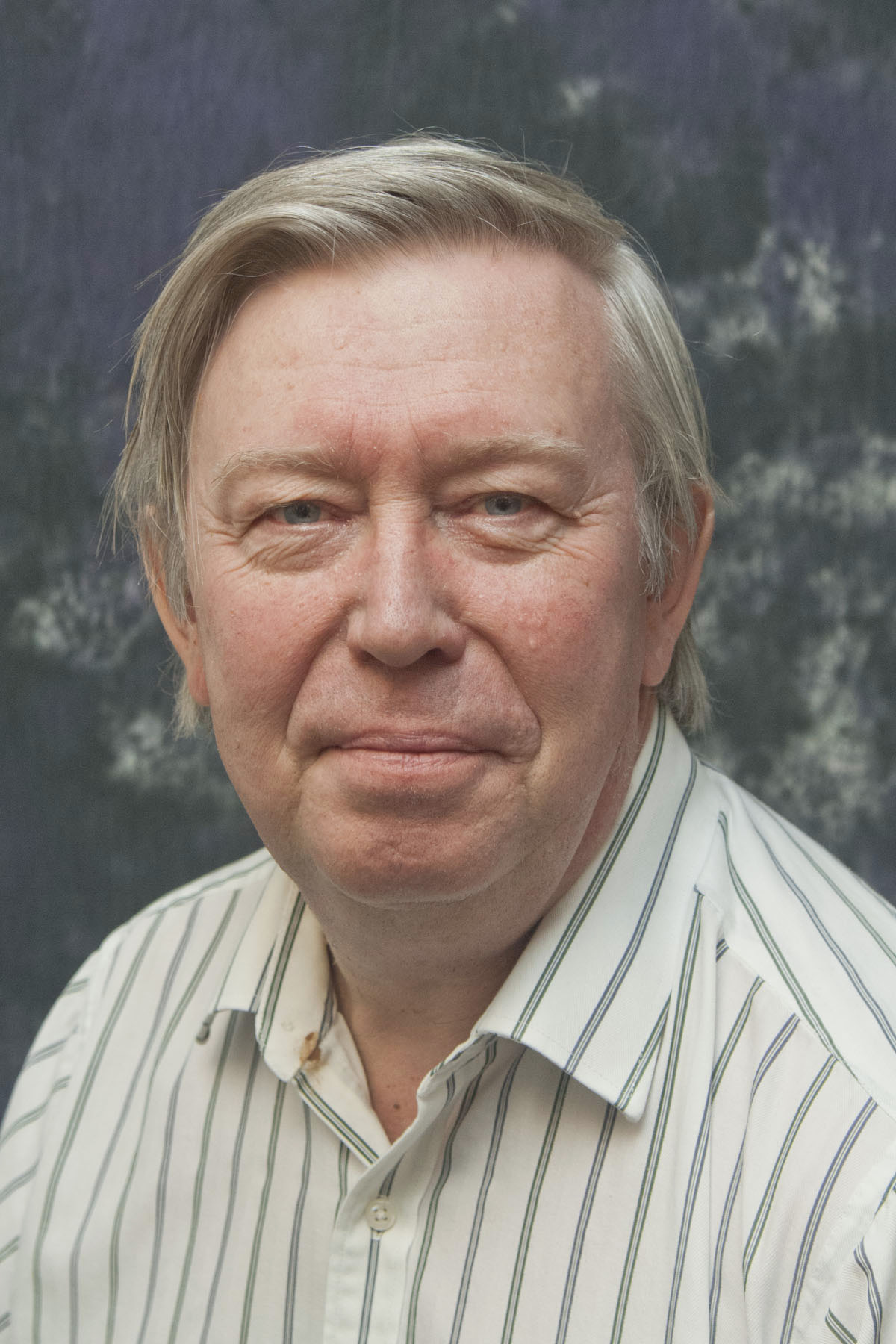 |
|
Viktor Mokeev
Victor Mokeev attended the Physics Department at Lomonosov Moscow State University (Russia) and graduated with honors in 1978 with a
Master of Science degree and with a Ph.D. in Nuclear Physics in 1981. He was awarded the Doctor of Science degree from the Russian
Federation Government in 2009. Victor joined Jefferson Lab in 2003 as a Staff Scientist. He developed the only available approach
worldwide for the extraction of γvpN* electrocouplings from exclusive π+π-p electroproduction
data off protons, which in combination with analysis of πN electroproduction, allowed for the extraction of the electrocouplings for most
excited states of the nucleon in the mass range < 1.8 GeV and for Q2 < 5 GeV2. Analysis of these results
within Continuum Schwinger Methods (CSMs) has demonstrated promising opportunities for gaining insight into the emergence of hadron mass
(EHM) from the results on the Q2-evolution of the γvpN* electrocouplings. The combined studies of
π+π-p photo- and electroproduction data allowed for the discovery of the new N'(1720)3/2+ baryon
state, currently the only known new baryon state for which information on the internal structure in terms of the Q2-evolution
of its electroexcitation amplitudes has become available. Victor is the spokesperson for several experiments on N* spectrum and structure
studies using the CLAS12 detector, including exploration of N* structure at the highest photon virtualities ever achieved for Q2
< 10 GeV2 and the search for new states of baryon matter with glue as an active structural component, the so-called hybrid baryons.
Victor served on the editorial board for the 2013 review paper "Studies of Nucleon Resonance Structure in Exclusive Meson Electroproduction",
chaired the editorial board for the 2020 review paper "Strong QCD from Hadron Structure Experiments", and served on several organizing committees
for international workshops on N* Physics.
Current Responsibilities in Hall B:
- Development of reaction models for the extraction of nucleon resonance electroexcitation amplitudes from exclusive meson electroproduction data.
- Extraction of nucleon resonance electrocouplings from the CLAS π+π-p electroproduction data for all prominent N* within
the mass range <2 GeV and for Q2 <5 GeV2.
- In collaboration with the JLab Theory Division: evaluation of the resonant contributions to inclusive electron scattering observables by employing
the experimental results on the Q2-evolution of the N* electroexcitation amplitudes.
- In collaboration with the University of Connecticut: exploration of the possible application of Argonne-Osaka coupled channel analysis to
the extraction of the γvvpN* electrocouplings from experimernts with CLAS12 by employing hadronic amplitudes from the data to be
measured at JPARC on πN → ππN reactions.
- Organization and contribution into synergistic efforts between experiment, phenomenology, and hadron structure theory aimed to gain insight from the
results on the N* electroexcitation amplitudes into the dynamics of the strong interaction that underlie the emergence of N* structure from QCD.
- Supervision of the Moscow State University group activity in Hall B.
Current Research Actitivites in Hall B:
- E12-06-108A (RG-A) - Exclusive N* → KY Studies with CLAS12 (spokesperson)
- E12-16-010A (RG-K) - Nucleon Resonance Structure Studies Via Exclusive KY Electroproduction at 6.6 GeV and 8.8 GeV (spokesperson)
- E12-16-010 (RG-K) - A Search of Hybrid Baryons in Hall B with CLAS12 (spokesperson)
- Hadron Structure Group:
- RG-A measurement of inclusive electron scattering cross section and evaluation of the resonance contributions
- Developing program for studies of emergence of hadron mass in Hall B with an energy-doubled CEBAF accelerator to 22 GeV
Selected Publications:
- V.I. Mokeev and D.S. Carman, "Photo- and Electrocouplings of Nucleon Resonances", Few Body Systems 63, 59 (2022).
- D.S. Carman et al. (CLAS Collaboration), "Beam-Recoil Transferred Polarization in K+Y Electroproduction in the Nucleon Resonance
Region with CLAS12", Phys. Rev. C 105, 065201 (2022).
- A.N. Hiller Blin, W. Melnitchouk, V.I. Mokeev, V.D. Burkert, and V.V. Chesnokov, "Resonant Contributions to Inclusive Nucleon Structure Functions from
Exclusive Meson Electroproduction Data", Phys. Rev. C104, 025201 (2021).
- D.S. Carman, K. Joo, and V.I. Mokeev, "Excited Nucleon Spectrum and Structure Studies with CLAS and CLAS12", Few Body Systems 61, 29 (2020).
- S.J. Brodsky et al., "Strong QCD from Hadron Structure Experiments", Int. J. Mod. Phys. E29, 203006 (2020).
- V.I. Mokeev, V.D. Burkert, D.S. Carman, L. Elouadrhiri, and E.Golovatch, "Evidence for the N'(1720)3/2+ Nucleon Resonance from Combined Studies of
CLAS π+π-p Photo- and Electroproduction Data", Phys. Lett. B 805, 135457 (2020).
- E.N. Golovatch et al. (CLAS Collaboration), "First Results on Nucleon Resonance Photocouplings from the γp →
π+π-p Reaction", Phys. Lett. B 788, 371 (2019).
- V.I. Mokeev, V.D. Burkert, D.S. Carman, L. Elouadrhiri, and G.V. Fedotov,"New Results from the Studies of the N(1440)1/2+, N(1520)3/2−, and
Δ(1620)1/2− Resonances in Exclusive ep →e'pπ+π- Electroproduction with the CLAS Detector", Phys. Rev. C 93, 025206
(2016).
- I.G. Aznauryan et al., "Studies of Nucleon Resonance Structure in Exclusive Meson Electroproduction", Int. J. Mod. Phys E22, 1330015 (2013).
- V.I. Mokeev et al. (CLAS Collaboration), "Experimental Study of the P11(1440) and D13(1520) resonances from CLAS data on
ep → e'pπ+π-", Phys. Rev. C 86, 035203 (2012).
|

